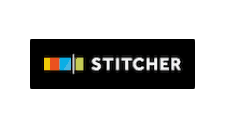Listen to Episode 47
Bonus: Watch the spotlight version of this episode on YouTube!
Full Show Notes
As a Data Coach, Jordan works with teachers and school leaders to collect and analyze data to inform instruction. His role is relatively new to the school and they are constantly finding new ways to make better use of the data that most schools collect – but have yet to analyze. We dive deep into different examples of data coaching in all different areas of the school – and the impact this process is having on teacher professional growth and student learning.
Jordan is a full time teacher, works with coaching team on developing data protocols, looking at whole school data, and looking at accreditation reporting.
Recent project: 10th grade English team, developed a new pedagogical technique for poetry. Developed a survey protocol, analyzed it together, written a white paper, submitted to an academic journal. Work with teachers on something they’re already doing to measure: 2 types of measurement: internal (feeling) and external (surveys, data).
The “I Notice” technique, getting students to deep dive what they notice and feel when reading poetry. Used survey protocols, focus group interviews, and teacher input as 3 main data sources. As students engaged in this pedagogical technique, students self-efficacy about being a poet starkly improved. Hard to measure if they became better poets or analysis of poetry, but self-efficacy went through the roof.
Teachers designed a set of pre- and post-surveys and exit ticket surveys (macro and micro), focus group questions were more open ended (separate from survey) and were used as a discussion question in the team.
Statistics is an art, we chose which type of T-test to use, and which way to correct for P-values. So, by using multiple measures (multiple surveys, focus groups and teacher focus groups), we saw a triangulation of the data.
To help teachers feel more comfortable with data analysis, Jordan validates the professionalism of the teacher and data analysis that teachers are already doing, and naming it as data collection, and not valuing one over the other. Avoids data specific language / jargon. Watch for the gloss over expression on the teacher’s face to recognize when the concept needs to be re-framed and re-stated.
What are you doing that is challenging / exciting / interesting your school?
Just unrolled a new “coaching menu” to allow teachers to self-select into coaching. “Data crunch bar” for Jordan’s data coaching. Going to scrape and mine the reporting data to put it into visuals to see how departments grade to give them opportunity to calibrate. They will look at grading data from the entire division and structure some conversations about it.
Making teachers feel safe: teachers know Jordan, ensure that individuals are not identifiable (no single teacher teams) by making sure not to use those as groupings, the only people who are going to see the data is Jordan and he’ll pull from course numbers (anonymize the pulling of the data), ask teachers to trust them.
Data is nothing without dialogue. First step is making it visual (we learn through our eyes, not reading numbers), make a quick consumption display, make some separate smaller displays – whole school compared to your department. Use protocols (I notice, I wonder; here’s what, so what, now what; what do you notice, what do you think is happening, what do you think should be happening). This will be new, first time they’ve looked at whole division grading data.
What kind of data do you collect and analyze about your coaching practice? How do you know your role is having an impact?
Dream scenario: would be just like a teacher: admin walk through, see lessons, students give surveys, parents give surveys, academic results.
As a coach: have coachees complete surveys (what do they think the impact of coaching was – review this over time as longitudinal data), have admin give feedback, share coachees practice / samples / portfolio. Important to have multi-modal approach.
When coaching is new: Start with an under 10 question survey at the end of a cycle for each coachee, could also bring some of the coachees together in small groups that would work well together for a focus group conversation.
Goal is to start measuring, and taking action, tweak questions as you review the data.
How many data points do you need? Start with one. From the first data point, take an inquiry stance into the data. In the second one, I’ll see if the inquiry stance has changed. Take action right away. Becomes statistically significant, even after the first one, what does this data mean, and what can I do?
What inspired you to get started? What advice would you have for others who would like to become a data coach?
When I was first a math teacher, and an admin told me something was wrong with my data. Didn’t have the data literacy to put up a fight, got me started in further professional growth. At the same time I learned how to code. It all started to coalesce. Through my own education I was seeing the impact it was having on my own teaching with my collaborative teaching partners. Data visualization gave me a voice to express things that couldn’t be seen before.
Fortunate to be in international schools where I can try all different forms of data collection and visualization.
Where can we find you online?
Twitter: @jordangbenedict
Website: visualizeyourlearning.com – every month a new freebie
The Coach Certificate & Mentorship Program
An academic year of professional learning designed by coaches, for coaches!Do you want to feel more confident and inspired in your role as a coach?
We love sharing great content!
Get authentic, relevant, practical content delivered right to your inbox!
Connect with Us







